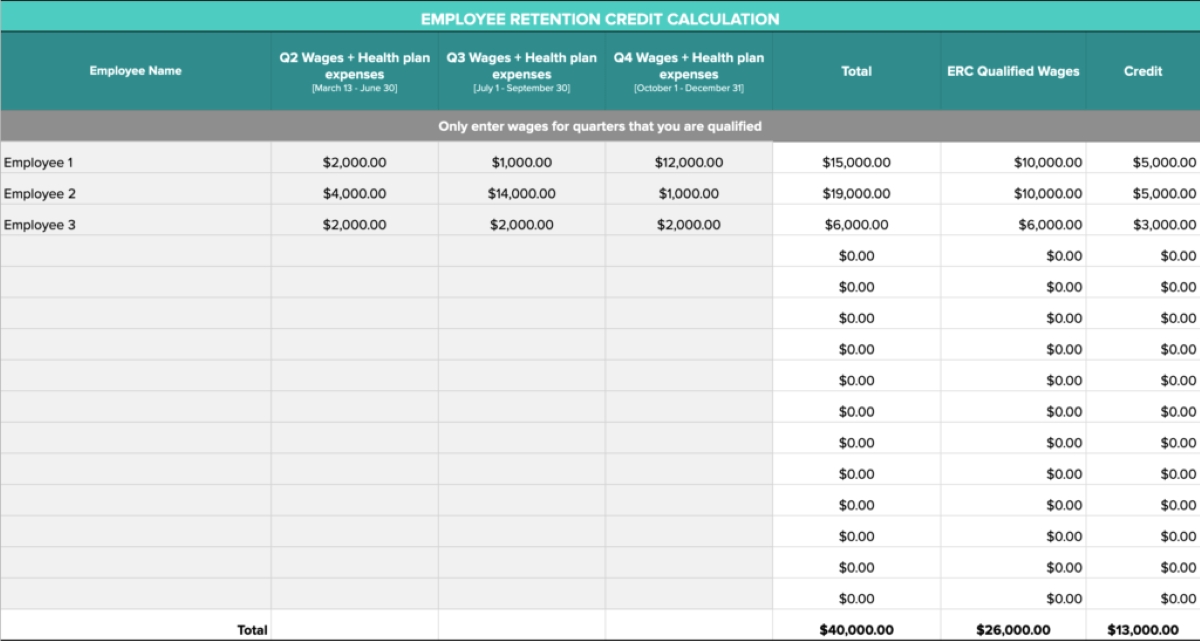

Finance
How To Transfer TSP To 401K
Published: October 15, 2023
Learn how to transfer your Thrift Savings Plan (TSP) to a 401K account for better financial planning and management. Streamline your retirement savings with our step-by-step guide.
(Many of the links in this article redirect to a specific reviewed product. Your purchase of these products through affiliate links helps to generate commission for LiveWell, at no extra cost. Learn more)
Table of Contents
Introduction
Transferring your Thrift Savings Plan (TSP) to a 401(k) can be a smart financial move that offers benefits and flexibility for your retirement savings. Whether you’re changing jobs or simply looking for better investment options, understanding the process and requirements of transferring your TSP to a 401(k) is crucial.
The TSP is a retirement savings plan for federal employees, offering them a way to save for their retirement through tax-advantaged contributions. On the other hand, a 401(k) is a retirement savings plan typically offered by private sector employers, allowing employees to save for retirement through pre-tax contributions.
While both the TSP and 401(k) are retirement savings vehicles, there are several reasons why individuals may choose to transfer their TSP funds to a 401(k). One common reason is the desire for more investment options and flexibility that the 401(k) may offer. Additionally, transferring your TSP funds to a 401(k) can consolidate your retirement savings into one account, making it easier to manage and track your investments.
However, it’s important to understand the eligibility requirements and process involved in transferring your TSP to a 401(k). Not everyone is eligible, and there may be specific rules and regulations to follow. Before making this decision, it’s crucial to consider the potential benefits and risks associated with transferring your TSP funds.
In this article, we will guide you through the process of transferring your TSP to a 401(k). We will also discuss the criteria for eligibility, the steps involved, and important considerations to keep in mind. By the end, you will have a clear understanding of how to transfer your TSP to a 401(k) and be equipped to make an informed decision for your retirement savings.
Understanding TSP and 401K
Before diving into the process of transferring your TSP to a 401(k), it’s essential to have a solid understanding of what these retirement savings plans are and how they differ.
The Thrift Savings Plan (TSP) is a retirement savings plan available to federal employees, including members of the uniformed services. It was established by the Federal Employees’ Retirement System Act of 1986 and is designed to help individuals accumulate savings for their retirement. The TSP offers various investment options, including lifecycle funds and individual funds, allowing participants to choose how their contributions are invested to generate growth.
A 401(k), on the other hand, is a retirement savings plan typically offered by private sector employers. It is named after the section 401(k) of the Internal Revenue Code, which allows employees to contribute a portion of their pre-tax income to a retirement account. Employers may also choose to match a percentage of the employee’s contributions. Like the TSP, a 401(k) offers a range of investment options for participants, including stocks, bonds, and mutual funds.
While both the TSP and 401(k) are retirement savings plans, there are some key differences to be aware of. One major difference is the eligibility requirements. The TSP is specifically available to federal employees and members of the uniformed services, while a 401(k) is offered by private sector employers to their employees.
Another difference lies in the contribution limits. In 2021, the maximum contribution limit for the TSP is $19,500 for individuals under 50 years old and $26,000 for individuals aged 50 and older. On the other hand, 401(k) contribution limits can vary depending on the plan’s terms and the individual’s age. In 2021, the maximum limit for individuals under 50 is $19,500, and $26,000 for those aged 50 and older.
Lastly, the investment options may differ between the TSP and 401(k). The TSP offers a limited number of funds to choose from, including government securities, common stocks, and bonds. In contrast, a 401(k) typically provides a more extensive range of investment options, including individual company stocks, sector-specific funds, and even self-directed brokerage accounts.
Understanding these differences will help you make an informed decision when considering transferring your TSP funds to a 401(k). Whether it’s for better investment options, consolidation of retirement accounts, or other reasons, being knowledgeable about the intricacies of both plans will empower you to navigate the transfer process more effectively.
Reasons for Transferring TSP to 401K
Transferring your Thrift Savings Plan (TSP) to a 401(k) can be a strategic move that offers several benefits and advantages. While the decision ultimately depends on your individual circumstances and financial goals, here are some common reasons why individuals choose to transfer their TSP funds to a 401(k).
More Investment Options
One of the primary reasons individuals opt to transfer their TSP funds to a 401(k) is the desire for a broader range of investment options. While the TSP offers a selection of investment funds, it may not cover the specific funds or asset classes you wish to include in your portfolio. Transferring to a 401(k) allows access to a wider array of investment options, including individual company stocks, sector funds, and even self-directed brokerage accounts. This greater flexibility can give you more control over your investment strategy and potentially enhance your returns.
Consolidation of Retirement Accounts
Over the course of your career, you may accumulate retirement savings in various accounts, including multiple TSP accounts if you have changed federal jobs. Transferring your TSP funds to a 401(k) can help streamline and consolidate your retirement savings. By combining your TSP balance with your 401(k) balance, you can have a single account that is easier to manage and track. This consolidation simplifies the administrative process and provides a clearer picture of your overall retirement savings.
Employer Match Contributions
If you are transferring your TSP funds to a 401(k) with a new employer, you may gain access to valuable employer matching contributions. Many employers provide a match on employee contributions up to a certain percentage, effectively providing free money that can boost your retirement savings. By transferring your TSP funds and taking advantage of the employer match, you can leverage this additional benefit to accelerate your retirement savings and maximize your investment returns.
Tax Advantages
Transferring your TSP funds to a 401(k) can have potential tax advantages, depending on your specific situation. If you transfer your funds directly from the TSP to a traditional 401(k), the transaction is not considered a taxable event. Your TSP funds will retain their tax-deferred status within the 401(k) account. However, it’s essential to consult with a tax professional to understand the tax implications and ensure compliance with any relevant rules and regulations.
These are just a few reasons why individuals choose to transfer their TSP funds to a 401(k). However, it’s crucial to evaluate your personal circumstances, financial goals, and the specific features of your TSP and potential 401(k) carefully. Consider speaking with a financial advisor to determine if transferring your TSP funds is the right move for you and to develop a comprehensive retirement savings strategy.
Eligibility and Requirements
Before you embark on transferring your Thrift Savings Plan (TSP) to a 401(k), it’s important to understand the eligibility criteria and requirements involved in the process.
Eligibility
Not everyone is eligible to transfer their TSP funds to a 401(k). The primary factor in determining eligibility is whether your new employer offers a 401(k) plan that accepts rollovers from other retirement accounts. If your new employer does not offer a 401(k) or does not accept rollovers, you will not be able to transfer your TSP funds to a 401(k) with them.
Additionally, some employers may have specific rules or waiting periods before you can participate in their 401(k) plan. Make sure to review the eligibility requirements of your new employer’s plan before initiating the transfer.
Requirements
To transfer your TSP funds to a 401(k), you will need to follow a few requirements and steps:
- Contact your new employer: Reach out to your new employer’s HR department or benefits administrator to inquire about their 401(k) plan and the process for transferring funds from your TSP.
- Obtain necessary forms: Your new employer will provide you with the required forms to initiate the transfer. These forms typically include a rollover request form and beneficiary designation form.
- Complete the forms: Carefully fill out the forms with accurate information. Review the instructions and provide all requested details, including your TSP account information and the desired amount to transfer.
- Submit the forms: Once completed, submit the forms to your new employer’s HR department or benefits administrator. Ensure that you follow any specific submission instructions outlined in the documentation.
- Wait for processing: The processing time for the transfer may vary depending on the administrative procedures of your new employer’s 401(k) plan. It’s advisable to follow up with the HR department to inquire about the status of your transfer.
It’s important to note that the TSP has certain restrictions on the frequency of transfers. Current federal employees are limited to one partial transfer during their career, while separated federal employees can initiate multiple transfers. Make sure to review the TSP rules and consult with your TSP administrator to ensure compliance with these guidelines.
Furthermore, transferring your TSP funds to a 401(k) will not affect your ability to contribute to your TSP account in the future. You can continue contributing to your TSP separately, or you may choose to stop contributions and focus solely on your 401(k) if your new employer offers matching contributions.
Understanding the eligibility requirements and following the necessary steps will help ensure a smooth and compliant transfer of your TSP funds to a 401(k). Consider consulting with a financial advisor or tax professional for personalized guidance and to ensure that you meet all the necessary requirements specific to your situation.
Steps to Transfer TSP to 401K
Transferring your Thrift Savings Plan (TSP) to a 401(k) involves a series of steps that must be followed to ensure a successful and smooth transfer. Here is a step-by-step guide to help you navigate the process:
- Step 1: Research your new employer’s 401(k) plan: Before initiating the transfer, familiarize yourself with your new employer’s 401(k) plan. Review the plan’s provisions, investment options, contribution limits, and any specific rules or restrictions that may apply.
- Step 2: Contact your TSP administrator: Reach out to the TSP administrator to notify them of your intent to transfer funds to a 401(k). They will provide you with the necessary forms and instructions to initiate the transfer process.
- Step 3: Complete the TSP transfer paperwork: Fill out the required TSP transfer paperwork accurately and thoroughly. This typically includes a TSP-60 form, which authorizes the transfer of funds from your TSP account to your new employer’s 401(k) plan. Provide all requested information, including your personal details, TSP account number, and the name and address of your new employer’s 401(k) plan.
- Step 4: Submit the paperwork to the TSP: Once you have completed the necessary forms, submit them to the TSP administrator according to their instructions. Be sure to include any additional documentation required, such as a copy of your new employer’s 401(k) plan information or any specific transfer request forms.
- Step 5: Notify your new employer: Inform your new employer’s HR department or benefits administrator of your intention to transfer your TSP funds to their 401(k) plan. They will provide you with the necessary forms and instructions to complete the transfer process on their end.
- Step 6: Complete the 401(k) transfer paperwork: Fill out the provided forms for the 401(k) transfer accurately and completely. These forms will typically include a rollover contribution form and beneficiary designation form. Include all requested information, such as your personal details, TSP transfer amount, and account number.
- Step 7: Submit the paperwork to your new employer: Once you have filled out the 401(k) transfer forms, submit them to your new employer’s HR department or benefits administrator. Follow any specific submission instructions they provide to ensure the paperwork is processed accordingly.
- Step 8: Monitor the transfer process: Keep track of the transfer process and stay in touch with both the TSP administrator and your new employer’s HR department. This will help you stay informed about the progress of your transfer and provide an opportunity to address any potential issues or concerns that may arise.
- Step 9: Confirm the successful transfer: Once the transfer is complete, verify with both the TSP administrator and your new employer that the funds have been successfully transferred to your 401(k) account. Review your new 401(k) account statements to ensure that the transferred funds are reflected accurately.
Following these steps will help you navigate the process of transferring your TSP funds to a 401(k) smoothly. It’s important to note that the transfer timeline can vary depending on the administrative procedures of both the TSP and your new employer’s 401(k) plan. Therefore, it’s advisable to initiate the transfer well in advance and stay organized throughout the process.
If you have any questions or concerns during the transfer process, consider reaching out to a financial advisor or tax professional who can provide guidance tailored to your specific situation.
Considerations before Transferring
Before initiating the transfer of your Thrift Savings Plan (TSP) to a 401(k), it’s essential to carefully consider a few key factors. By taking the time to evaluate these considerations, you can make an informed decision that aligns with your financial goals and retirement strategy. Here are some important factors to keep in mind:
Investment Options and Fees
One crucial consideration is the investment options and fees associated with both your TSP and the target 401(k) plan. Compare the investment options available in each plan, including the variety of funds, stocks, bonds, and other investment vehicles. Assess whether the 401(k) provides a broader range of investment choices that better align with your investment objectives and risk tolerance.
Additionally, evaluate the fees associated with both plans. Look into expense ratios, administrative fees, and any other costs that may impact your investment returns. Consider whether the potential benefits of the 401(k) investment options outweigh the fees associated with the transfer.
Vesting Schedule and Employer Match
If your new employer offers an employer match on contributions, take note of the vesting schedule. Vesting refers to the time it takes for you to fully own the employer’s contributions to your 401(k) account. Some employer match programs have a vesting schedule that may require you to stay with the company for a certain period before you are entitled to the full amount of the employer match.
Consider whether the new employer’s vesting schedule aligns with your long-term career plans. If you anticipate leaving the company before you become fully vested, it may impact the overall value of the employer match and could potentially affect your decision to transfer your TSP funds.
Tax Implications
Transferring your TSP funds to a 401(k) can have tax implications, depending on the type of transfer and the specific circumstances involved. If you plan to transfer the funds directly from the TSP to a traditional 401(k), the transaction is typically considered a tax-free event. However, if you opt for a different type of transfer, such as withdrawing the funds and then rolling them over, you may face tax consequences.
It’s crucial to consult with a tax professional or financial advisor to understand the tax implications and ensure compliance with any applicable tax laws. They can provide personalized guidance based on your unique situation and help you minimize any potential tax liability associated with the transfer.
Company Benefits and Retirement Plans
Consider how the transfer of your TSP funds to a 401(k) will align with your overall retirement strategy and potential future company benefits. If your new employer offers other retirement plans, such as a pension or employee stock purchase plan, evaluate how these plans play into your overall retirement savings strategy.
Additionally, assess the overall benefits package offered by your new employer. Consider factors such as health insurance, disability coverage, and other employee benefits that may impact your financial well-being in retirement. Weigh these benefits against the potential advantages of transferring your TSP funds to a 401(k).
Taking these considerations into account will empower you to make an informed decision about transferring your TSP funds to a 401(k). It’s advisable to consult with a financial advisor who can provide guidance specific to your situation and help you evaluate the potential benefits and drawbacks of the transfer.
Potential Benefits and Risks
Transferring your Thrift Savings Plan (TSP) to a 401(k) can offer various potential benefits, but it’s important to also be aware of the potential risks involved. Here are some of the key advantages and risks to consider before deciding to transfer your TSP funds to a 401(k):
Potential Benefits
- More Investment Options: Transferring your TSP funds to a 401(k) may provide access to a wider range of investment options compared to the limited choices available in the TSP. With more investment options, you have the potential to diversify your portfolio and align your investments with your specific financial goals and risk tolerance.
- Consolidation and Ease of Management: By transferring your TSP funds to a 401(k), you can consolidate your retirement savings into a single account. This simplifies the management of your funds, making it easier to track and monitor your investments.
- Potential Employer Match: If your new employer offers a 401(k) with an employer match, transferring your TSP funds can provide an opportunity to take advantage of this additional contribution. An employer match essentially means free money that can boost your retirement savings over time.
- Tax Advantages: Transferring your TSP funds directly to a traditional 401(k) can have potential tax advantages. The transfer is typically considered a tax-free event, allowing you to maintain the tax-deferred status of your retirement savings.
Potential Risks
- Loss of TSP Benefits: The TSP offers unique benefits such as low administrative costs and a range of lifecycle and target date funds. Transferring your TSP funds to a 401(k) may mean giving up these advantages, and your new 401(k) may not offer comparable benefits.
- Fees and Expenses: It’s important to carefully evaluate the fees and expenses associated with both your TSP and the 401(k) plan you are considering. While the 401(k) may offer more investment options, it could also come with higher administrative fees that could eat into your investment returns.
- Vesting Schedule: If your 401(k) offers an employer match, be aware of the vesting schedule. If you leave your new employer before becoming fully vested, you may forfeit a portion of the employer’s contributions, reducing the overall value of the match.
- Investment Performance: The potential benefits of transferring your TSP funds to a 401(k) rely on the performance of the investments available in the new plan. While a broader range of investment options may offer more flexibility, it also carries the risk of choosing poorly performing investments.
It’s important to carefully weigh the potential benefits and risks before deciding to transfer your TSP funds to a 401(k). Consider your personal financial goals, risk tolerance, and long-term retirement strategy. Consulting with a financial advisor or retirement planning expert can provide valuable insights and help you make an informed decision that aligns with your unique circumstances.
Frequently Asked Questions (FAQs)
Here are some commonly asked questions regarding the transfer of Thrift Savings Plan (TSP) funds to a 401(k):
1. Can I transfer my TSP funds to any 401(k) plan?
No, you can only transfer your TSP funds to a 401(k) plan that accepts rollovers from other retirement accounts. Contact your new employer’s HR department or benefits administrator to confirm if their 401(k) plan allows incoming rollovers.
2. Will transferring my TSP funds to a 401(k) affect my ability to contribute to my TSP account in the future?
No, transferring your TSP funds to a 401(k) will not impact your ability to contribute to your TSP separately. You can continue contributing to your TSP account or choose to focus solely on your 401(k) contributions, depending on your preferences and financial goals.
3. Are there any tax consequences when transferring TSP funds to a 401(k)?
If you transfer funds directly from the TSP to a traditional 401(k) account, it is typically considered a tax-free event. However, if you withdraw the funds from the TSP before transferring them to a 401(k), you may face tax consequences. Consult with a tax professional to understand the potential tax implications specific to your situation.
4. Can I transfer my TSP funds to a Roth 401(k)?
No, TSP funds cannot be transferred directly to a Roth 401(k). However, if your new employer’s 401(k) plan offers a Roth 401(k) option, you can request a conversion of your transferred funds from the traditional 401(k) to the Roth 401(k) within the plan.
5. How long does the transfer process typically take?
The transfer process timeline can vary depending on the administrative procedures of both the TSP and your new employer’s 401(k) plan. It’s recommended to initiate the transfer well in advance to allow for any necessary paperwork and processing time. Stay in touch with both the TSP administrator and your new employer’s HR department for updates on the progress of your transfer.
6. Can I transfer my TSP funds if I am still employed by the federal government?
While it is generally not allowed to transfer TSP funds while still employed by the federal government, there is an exception for service members. Uniformed services members who have a regular TSP account and are receiving pay from the Defense Finance and Accounting Service can transfer their TSP funds to an eligible employer’s plan, including a 401(k), while still in service.
These are some of the frequently asked questions regarding the transfer of TSP funds to a 401(k). It’s important to note that specific rules and regulations may vary, so it’s advisable to consult with the TSP administrator and your new employer’s HR department for the most accurate and up-to-date information.
Conclusion
Transferring your Thrift Savings Plan (TSP) funds to a 401(k) can be a strategic move that offers benefits and flexibility for your retirement savings. By understanding the process, eligibility criteria, and considerations involved, you can make an informed decision that aligns with your financial goals and circumstances.
While transferring your TSP to a 401(k) opens up opportunities for more investment options, consolidation of accounts, potential employer match contributions, and tax advantages, it’s important to carefully evaluate the potential risks as well. Consider factors such as fees, vesting schedules, and the performance of investments available in both the TSP and the 401(k) plan.
Before initiating the transfer, thoroughly research your new employer’s 401(k) plan and consult with professionals such as financial advisors or tax experts. They can provide personalized guidance tailored to your specific situation.
Ultimately, the decision to transfer your TSP funds to a 401(k) should be based on a comprehensive assessment of your retirement goals, risk tolerance, investment preferences, and overall financial strategy. By weighing the potential benefits and risks, you can make a well-informed choice that optimizes your retirement savings potential.
Remember to stay proactive and organized throughout the transfer process, keeping in touch with the TSP administrator and your new employer’s HR department to ensure a smooth transition and successful transfer of funds.
Finally, regularly reassess your retirement savings strategy and review any changes in regulations or employer benefits to make adjustments as needed. Your financial well-being in retirement depends on making sound decisions and managing your retirement savings effectively.














